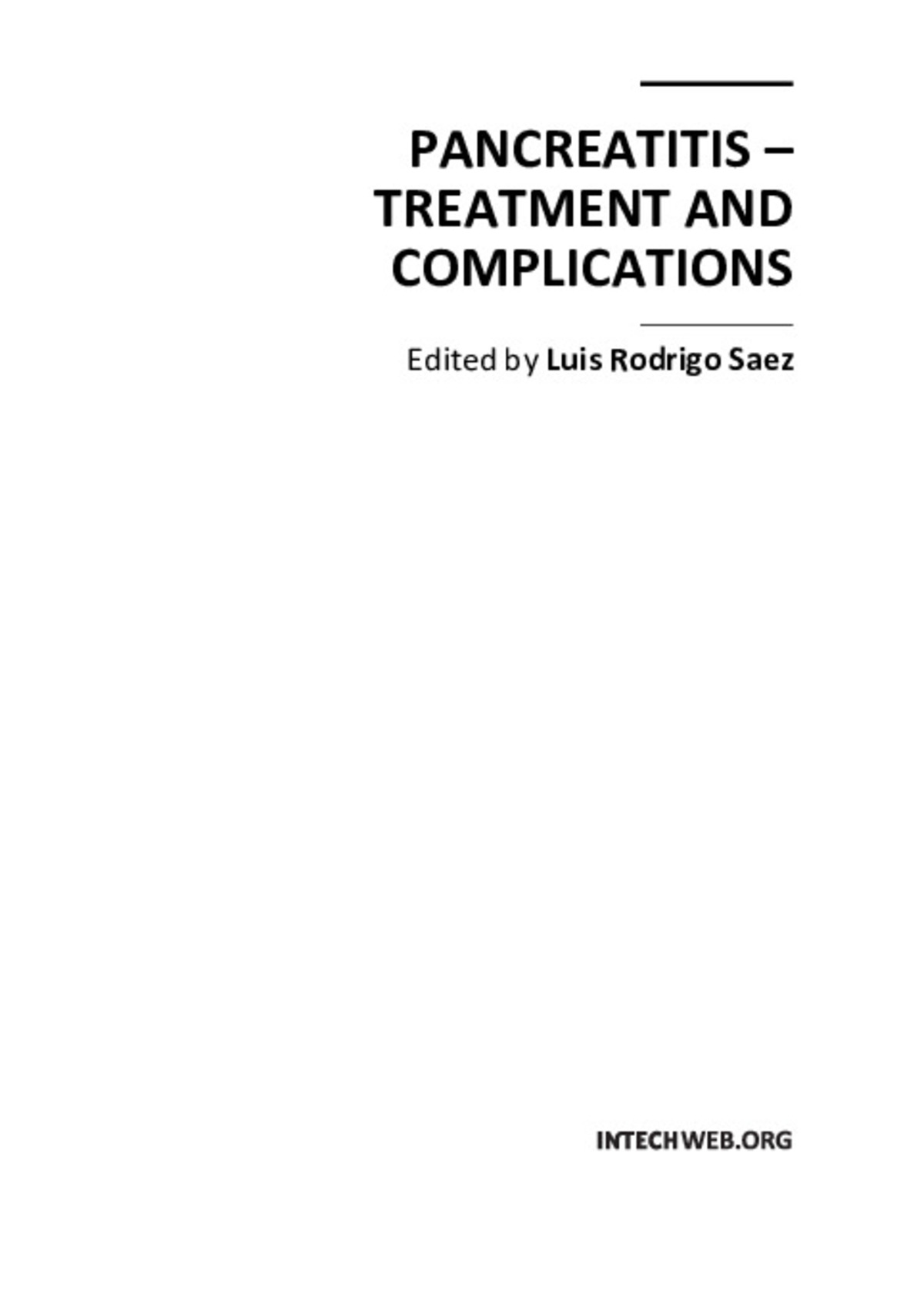Pancreatitis: Treatment and Complications
Author:
Subject:
Gastroenterology
Publication date:
Editorial:
InTech
Publisher version:
Abstract:
Pancreatitis may be acute or chronic. Although they can be caused by similar aetiologies, they tend to follow distinct natural histories. Around 80% of acute pancreatitis (AP) diagnoses occur as secondary to gallstone disease and alcohol misuse. This disease is commonly associated with the sudden onset of upper abdominal that is usually severe enough to warrant the patient seeking urgent medical attention. Overall, 10 to 25% of AP episodes are classified as severe, leading to an associated mortality rate of 7 to 30%. Treatment is conservative and consists of general medical support performed by experienced teams, sometimes in ICUs. Although most cases of acute pancreatitis are uncomplicated and resolve spontaneously, the presence of complications has significant prognostic importance. Necrosis, hemorrhage, and infection convey rates of up to 25%, 50%, and 80% mortality, respectively. Other complications such as pseudocyst formation, pseudoaneurysm formation, or venous thrombosis increase morbidity and mortality to a lesser degree. The presence of pancreatic infection must be avoided.
Pancreatitis may be acute or chronic. Although they can be caused by similar aetiologies, they tend to follow distinct natural histories. Around 80% of acute pancreatitis (AP) diagnoses occur as secondary to gallstone disease and alcohol misuse. This disease is commonly associated with the sudden onset of upper abdominal that is usually severe enough to warrant the patient seeking urgent medical attention. Overall, 10 to 25% of AP episodes are classified as severe, leading to an associated mortality rate of 7 to 30%. Treatment is conservative and consists of general medical support performed by experienced teams, sometimes in ICUs. Although most cases of acute pancreatitis are uncomplicated and resolve spontaneously, the presence of complications has significant prognostic importance. Necrosis, hemorrhage, and infection convey rates of up to 25%, 50%, and 80% mortality, respectively. Other complications such as pseudocyst formation, pseudoaneurysm formation, or venous thrombosis increase morbidity and mortality to a lesser degree. The presence of pancreatic infection must be avoided.
ISBN:
DOI:
Files in this item





